On 14 April, Harlow Sea Cadets joined The Harlow Council Spring Clean Up and did some serious damage as cadets and volunteers managed to collect over 12 bags of rubbish around the city, negotiating some seriously thick hedge to get the job done.
PPO (SCC) Kelly Aimable from Harlow said: "we chose to do the litter pick up as it is a great way to show the cadets the impact it has when people drop litter on the floor. It also teaches them responsibility for the environment. We feel it is a great cause to support as it is helping towards future generations an we are proud of the cadets that turned up to help and be involved".
BZ Harlow Sea Cadets for your work in improving your local community!
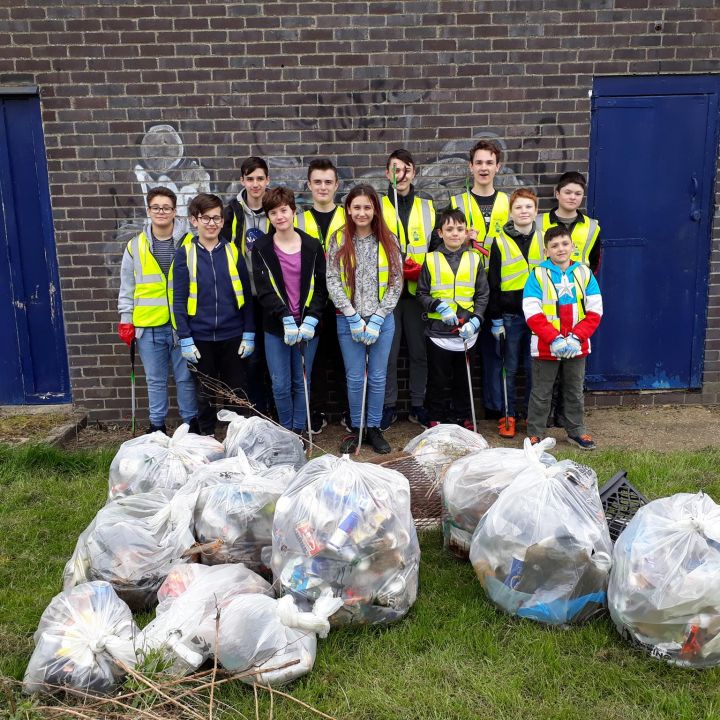
Harlow Sea Cadets team up to clean up
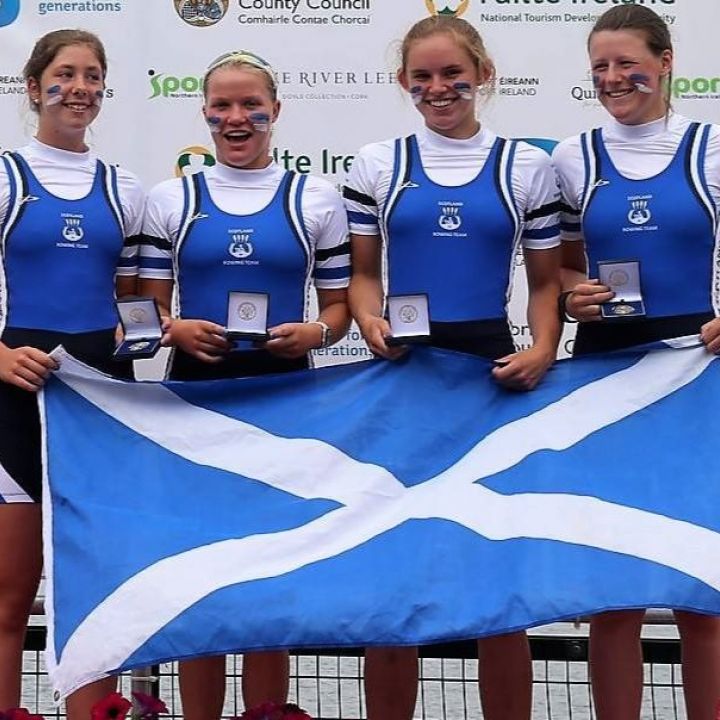
Ex-Cadet to row for the UK
ive-years-ago, ex-Peterhead cadet Megan was the youngest competitor at Sea Cadets' National Combined Regatta where she effortlessly took gold in the Yole category - now she's aiming to win gold for Team GB!
Reflecting on the competition five-years-ago, Northern Area Officer Peter Adams said: "I saw Megan win gold in the Yole category of the National Combined Regatta at the age of 14. She was the youngest competitor but she seemed to effortlessly cross the finish line and was well ahead of the competition".
Megan's love of rowing was so strong that she ended up leaving Sea Cadets to focus solely on her rowing, going on to be selected for Scotland and, recently, the Great British team.
Megan's mum, Gillian told us: "As her mum, I’m so grateful for the opportunities Sea Cadets provided. The life lessons Megan learned whilst at Sea Cadets have provided a strong platform that enabled her to succeed both in the classroom and on the water."
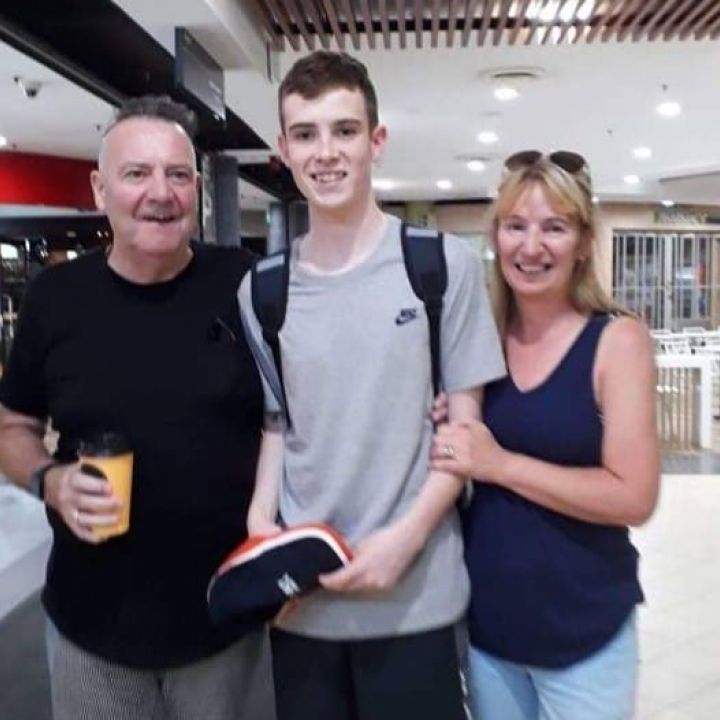
International Exchange Brings Family Together
Leading Cadet Luke, from Blackburn Unit, found himself meeting his grandad for the first time 4,000 miles from home on Sea Cadets' International Exchange program.
A few of years ago Luke’s mother, Lisa, was contacted by her biological father for the first time through social media site Facebook.
“We had plans to meet as soon as we could, but unfortunately we both had some health issues and long haul flights would prove to be difficult,” said Lisa. “As soon as we found out Luke had been accepted (onto the exchange programme), my Dad and his wife made the decision to visit him while he was on his exchange”.
Luke ended up having the experience of a lifetime when he met his grandad on Darling Harbour. Luke, along with three other cadets were part of the UK Sea Cadets group that travelled to Australia to explore the history and culture of life down-under.
Lisa said: “Luke loves Sea Cadets. His time on the International Exchange programme was so special and without Sea Cadets this would not have been possible”.
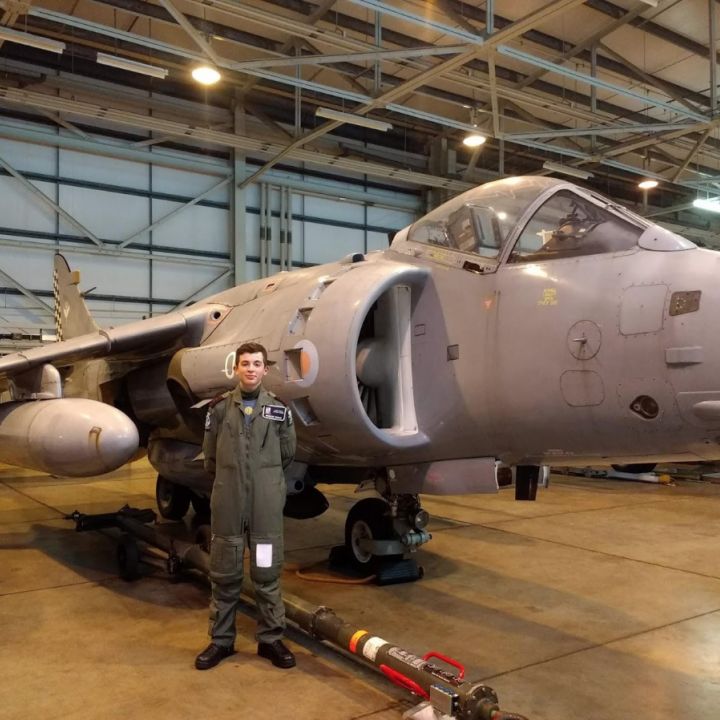
How I Got My Aviation Wings
In February, I was lucky enough to be awarded the Daedalus Trophy for achieving top student on the Cadet Naval Aviation Course (CNAC)!
Where the journey started
I discovered I’d been accepted on the course in mid-December. There was an email sent to me with a list of names, one of which was my own. I was given a kit list, travel instructions, and a list of pre-course work to be done by the time I’d left for Weymouth (where the Basic CNAC was going to take place). The topics that were Principles of Flight, Radiotelephony, Basic Aircraft Instruments, Meteorology, and airmanship.
The Course
We woke at 0600h in order to have breakfast at 0730h. Usually, we would start lectures at 0800h. Our first lecture was Navigation from 0800h to 1000h (most of our lectures were 2 hours long). If you have done the basic navigation specialisation then this part of the course should be fairly simple for you.
Our next lecture was Radiotelephony. This was probably the most difficult lecture of the entire course, not because it was a difficult subject but because the instructors had to talk exceptionally fast making it very difficult to take notes. Radiotelephony covered everything from Q-codes to callsigns as well as the Circuit.
Before dinner, we were asked to make a meteorology (MET) brief. We hadn’t been taught how to do that but I think that was part of the exercise. My flight’s MET brief was under-detailed, un-organised and disappointing, but it was our first and I don’t think the staff were expecting it to be any good, especially because we only had 15 minutes to prepare it.
Our last lecture of the day was the history of the fleet air arm (FAA). We were told about the FAA and all its major achievements and battles from when it was formed as the Royal Naval Air Service up until it’s newest aircraft carrier and her achievements. We finished that day at 2200h and were encouraged to do revision. We went to bed just after 2300h.
The next day was almost as difficult, we started the day with Airmanship and air law. We studied the different organisations linked with aviation in the UK and the EU as well as things like NOTAMs and airborne collision avoidance. We then studied the runway and all of its symbols and their definitions. After that, we had a lecture on the principles of flight.
On Tuesday, we spent a lot of the day on revision, however, we did study more MET and were told how to improve our MET briefs. We also studied the Radiotelephony transmitted in the circuit. We prepared our third MET brief but we wouldn’t be presenting it until the morning as a lot of the staff weren’t back from Yeovilton yet. For the first time that week, we got some free time to relax, although a lot of it was spent on personal revision!
On Wednesday, the first deal of the day was to do our group MET brief. I was more than nervous. We presented it, this time in an organised, structured fashion. We were given criticisms from most of the staff and the CO said nothing - I assumed no news meant good news. We were given lectures in the morning on human factors while flying, We were taught about Hypoxia, Aerotitis, and other difficulties of changes in pressure such as the bends. We were also taught about propulsion but only from the propeller. We then prepared our individual MET briefs for our exam in the afternoon. We were allowed to work on them together but we needed to present them individually.
Exams
There were four exams, MET, Radiotelephony in the circuit, Navigation and a written exam that covered all of the other topics we had learned. I will point out. However, not all of our assessment was on our exams, we were constantly assessed throughout the week on our knowledge and understanding, presentation and confidence, and most importantly our officer qualities.
Every exam was 1 hour. Our exams were done on flights, my first one was navigation. It went well, I plotted everything on the graph then filled out the route card and was finished and checked over with 15 minutes to spare. My second exam was my MET brief. It went better than I thought it would and I was told that I’d passed afterwards. I was pleased that I’d managed to improve my MET briefs since the second one. The next exam was Radiotelephony. A mock circuit was set up and we walked around it making various radio calls to the “tower” as we did so after which we were informed that we were the best group that had gone through it so far. Our last exam was a written exam.
Since we had no more studying to do, we got the evening off.
Flying
We got up at 0500h and left SCTC Weymouth at 0600h for RNAS Yeovilton. We got there in time for the 0800h MET brief from the staff there. We then went through training on how to exit the Grob Tutor in the event of an emergency. We were also weighed to see if we were heavy enough or too heavy to fly in the aircraft. I was only just heavy enough even after they’d added the weight of the 10kg parachute. We then had a quick tour of one of the hangars with the Commanding Officer of the base.
I had a quick bite to eat before going up and met my instructor, a civilian captain. I was given a parachute, sunglasses and gloves. I tried to make conversation with him but it was quite difficult to make out over the chatter from the tower and other aircraft around. We took off quickly and were above the clouds within a minute. He taught me the basic controls; pitching, yawing and banking. He then did a loop where we pulled about 3G. We then did another loop where I was following through and then I did one independently which I will admit was not as smooth as either of his. To finish the half hour off, We did a Cuban eight which, for anyone who doesn’t know, is a half loop followed by rolling onto your front and doing a dive, then another half loop followed by rolling back onto your front. We did two of those, I was told we’d pulled nearly 4G. Although it was good fun, it was like being in a washing machine. Unfortunately, the half hour I had in the aircraft was over.
Once I was back on the ground we had a tour of the FAA museum hangar. We were shown around the Swordfish Torpedo Bomber of the second world war, the Sea Fury, the Chipmunk training aircraft, the Sea Vixen, the Harrier jump jet and the F-4 Phantom. After that, we waited for everyone to finish their flights and went back to Weymouth.
Conclusion
We were given a quick individual brief telling us if we had passed and if we were through to the intermediate course, I was lucky enough to get through. At the presentation, everyone was given their wings and the awards were given out. The third best student and second best student were given the various prizes they’d won. Finally, the Daedelus award was called and to my utter surprise, my name was called. I went up and received the prizes, I was given the trophy with my name engraved on it, a Seconda 50 metre pilot’s watch, a Pooley’s flight equipment bag, four books which I was told had all the information that I needed if I wanted to get my private pilot’s license, and a foam toy disposable aeroplane which I still have.
I would encourage all cadets to apply for this course. It is difficult, but if you have self-discipline then it is entirely possible. Although there is a lot of course to cover, it is far better and far more satisfying than being at school as you are being pushed to be better and better. There are long, intensive hours to work but it is all interesting and worth it in the end, especially since you have the opportunity to fly at the end of the week. The course is entirely possible if you have no prior experience but a few qualifications would help, those being basic marine engineering, basic navigation and basic meteorology. I can absolutely say, this is the most challenging, most satisfying, best qualification I have achieved within or outwith the Sea Cadet Corps and that is why the SCC is one of the best charities founded!
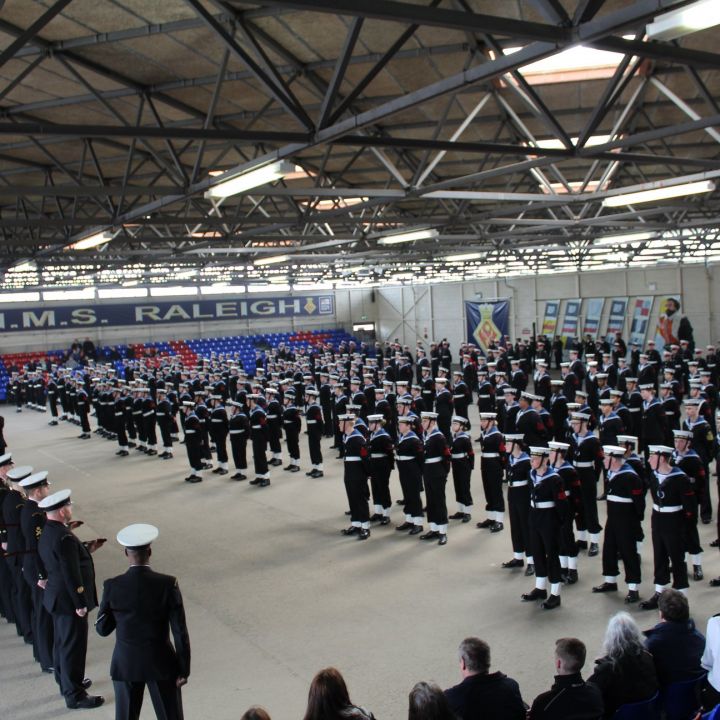
National Drill and Piping competition 2019
Over the weekend around 300 cadets gathered in Torpoint, Cornwall at HMS Raleigh to battle it out at the National Drill and Piping competition.
The best units and detachments were selected from 6 areas across the UK to compete amongst each other to win ‘The National Boxing Cup’ – the trophy given to the best performing area.
The competion comes down to being in sync with the rest of your team and performing at the highest level. Just being a little bit behind in movement or piping could be the difference between first and last.
This year South West Area won the overall competition.
South West Area Officer Nigel Morton said "I am delighted that South West Area did so well at the National Drill and Piping competition. Huge credit goes to the cadets who performed so brilliantly, with such pride on the day, and who have been working so hard in the last weeks and months. I am also very grateful to all the adults who have been involved in training and supporting Drill activity across the area, and who were there supporting on the day. I know that standards were high – well done to all those competing from across the country, and to all who made this great event happen and run so well. "

